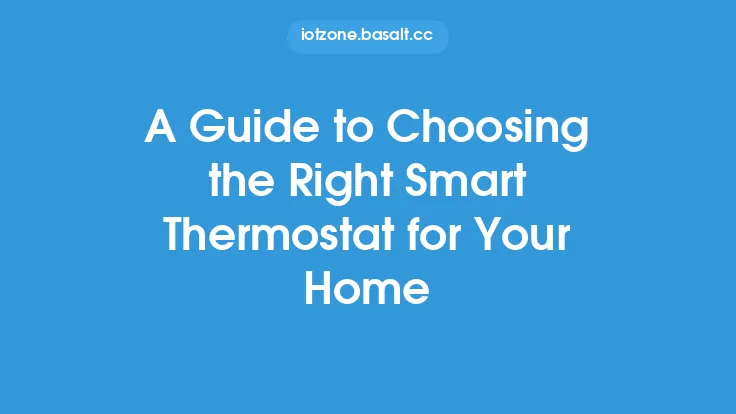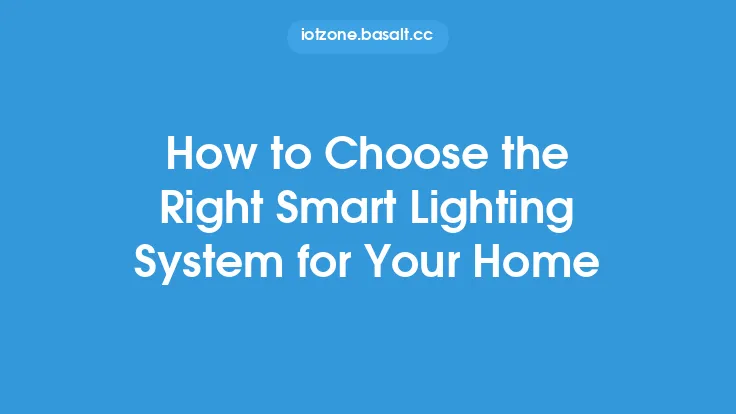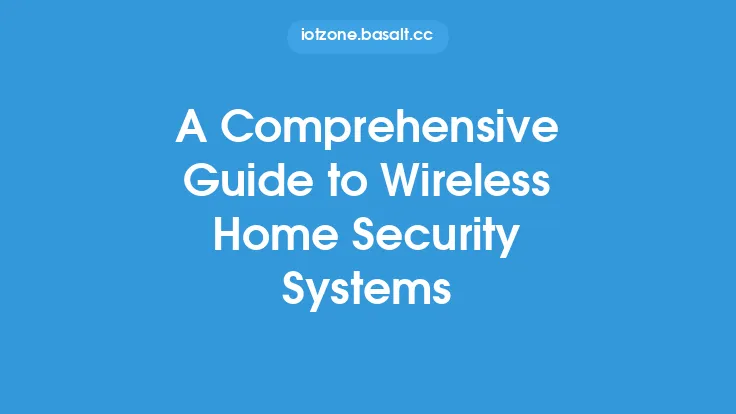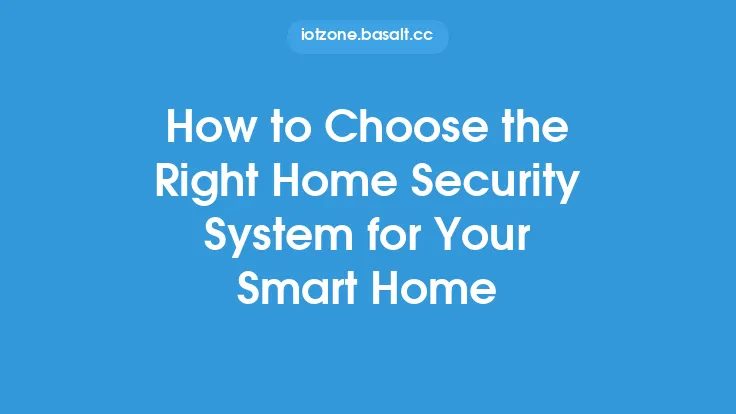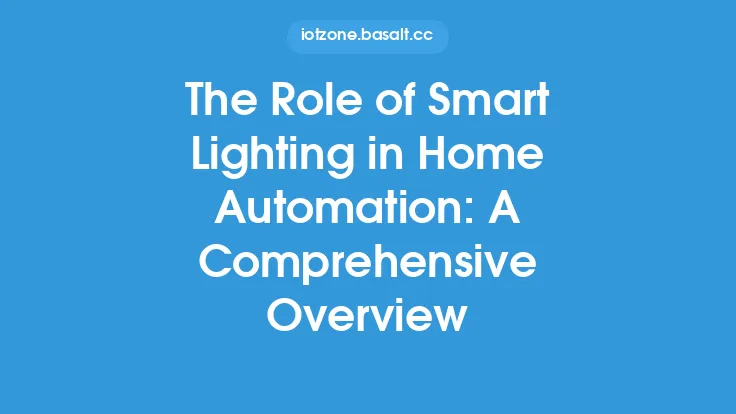When it comes to choosing the right home automation system, there are several factors to consider. With so many options available in the market, it can be overwhelming to decide which system is best suited for your needs. In this article, we will delve into the key considerations and features to look for when selecting a home automation system.
Key Considerations
Before selecting a home automation system, it's essential to consider your specific needs and requirements. Start by identifying the areas of your home that you want to automate, such as lighting, temperature, security, or entertainment. Think about the devices you want to control and the level of complexity you're comfortable with. You should also consider the size of your home, the number of devices you want to connect, and your budget.
System Architecture
A home automation system typically consists of a central hub or controller, sensors, and actuators. The central hub is the brain of the system, responsible for receiving and processing commands from various sources, such as remote controls, smartphones, or voice assistants. Sensors detect changes in the environment, such as motion, temperature, or light levels, and send signals to the central hub. Actuators, on the other hand, are devices that perform specific actions, such as turning on lights or adjusting the thermostat.
Communication Protocols
Home automation systems use various communication protocols to enable devices to talk to each other. Some common protocols include Zigbee, Z-Wave, Bluetooth, and Wi-Fi. Each protocol has its strengths and weaknesses, and some are more suitable for specific applications than others. For example, Zigbee and Z-Wave are low-power protocols that are ideal for battery-powered devices, while Wi-Fi is better suited for devices that require high bandwidth.
Device Compatibility
One of the most critical factors to consider when choosing a home automation system is device compatibility. Ensure that the system you choose is compatible with the devices you already own or plan to purchase. Look for systems that support multiple protocols and have a wide range of compatible devices. Some systems may also offer integration with popular smart home platforms, such as Amazon Alexa or Google Home.
Security and Privacy
Security and privacy are essential considerations when it comes to home automation systems. Look for systems that use robust encryption methods, such as SSL or TLS, to protect your data. Also, consider systems that offer secure authentication and authorization mechanisms, such as two-factor authentication. Additionally, check if the system allows you to control who has access to your data and devices.
User Interface and Experience
The user interface and experience are critical aspects of a home automation system. Look for systems that offer intuitive and user-friendly interfaces, such as mobile apps or web portals. Consider systems that allow you to create custom scenes, schedules, and automation rules. Also, check if the system provides real-time feedback and notifications, so you can stay informed about what's happening in your home.
Scalability and Flexibility
A good home automation system should be scalable and flexible, allowing you to add or remove devices as needed. Consider systems that offer modular designs, so you can easily expand or modify your system. Also, look for systems that support multiple device types, such as lights, thermostats, and security cameras.
Power and Backup
Power and backup are essential considerations for home automation systems. Consider systems that offer battery backup or redundant power supplies, so your system remains operational during power outages. Also, look for systems that use energy-efficient devices and protocols, such as Zigbee or Z-Wave, to minimize power consumption.
Support and Maintenance
Finally, consider the level of support and maintenance offered by the manufacturer. Look for systems that offer comprehensive documentation, online resources, and customer support. Also, check if the system provides regular software updates and security patches, so you can ensure your system remains secure and up-to-date.
Conclusion
Choosing the right home automation system requires careful consideration of several factors, including system architecture, communication protocols, device compatibility, security, user interface, scalability, power, and support. By understanding these key considerations, you can select a system that meets your specific needs and provides a seamless and integrated smart home experience. Remember to research and evaluate different systems, read reviews, and consult with experts before making a final decision. With the right home automation system, you can enjoy a more convenient, efficient, and comfortable living space.
